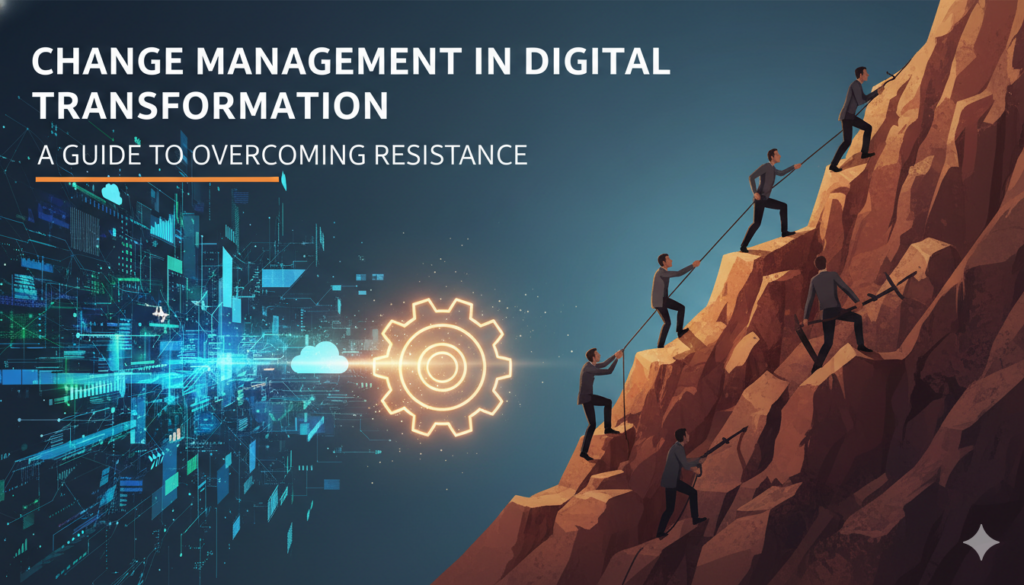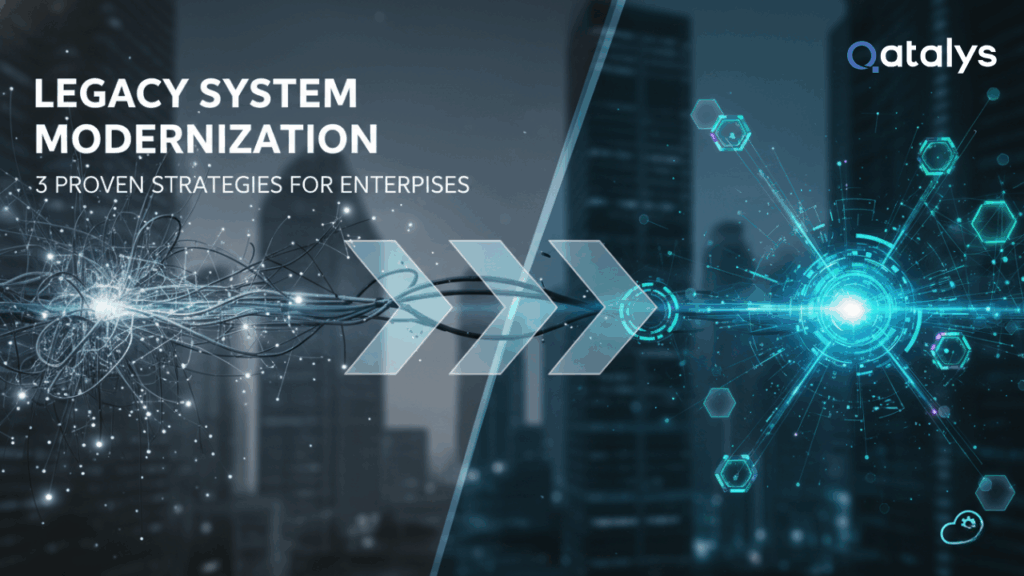Why Most Traditional GTM Playbooks Fall Short
B2B go-to-market strategies have never been more challenging. Buyers conduct deep research on their own, hopping across channels, and expect seamless experiences. According to the latest industry research, reliance on legacy playbooks leads to missed targets and wasted spend. Gartner and industry thought leaders echo a recurring theme: disconnected departments and outdated tech are creating friction, while artificial intelligence (AI) and unified engines are setting elite performers apart. Digital transformation initiatives and automation aren’t optional. Teams unable to integrate these advances risk falling behind as rivals connect with buyers faster and more meaningfully.
It’s not just about deploying new tools. The problem stems from fragmented execution, where sales, marketing, and service operate in silos. That leads to lost opportunities, inconsistent messaging, and a fractured customer journey. Current trends show that high-growth B2B companies have broken down these barriers, creating unified GTM engines that keep every department aligned around customer needs. Delivering measurable business value.
Key insight: In 2025, success is built on holistic GTM execution powered by AI and cross-functional collaboration.
Building a Solid GTM Foundation
Every breakthrough B2B GTM starts with clarity on your Ideal Customer Profile (ICP). Instead of targeting everyone, top-performing companies dig deep into TAM, SAM, and SOM. Translating total and served markets into precision ICPs using data, not intuition. Effective market validation techniques help teams adapt as segments evolve or market conditions shift.
Competitive mapping goes beyond basic competitor lists. High-growth teams examine competitors’ messaging, buying journeys, and where they excel or miss. This insight helps you position your offer in the gaps left by legacy vendors or slow-moving rivals.
Crafting value messaging gets personal. Financial decision-makers want efficiency or ROI; operations teams care about speed or reliability; end users value simplicity. Your GTM should tailor benefit statements and proof points to each audience, reflected across every touchpoint and channel.
How High Performers Align ICP, Segmentation, and Messaging
- ICP Precision: Successful enterprises use quarterly data reviews and customer interviews to sharpen their ICP. They leverage AI-driven analytics for account scoring, qualification criteria, and campaign targeting. Making every outreach more relevant.
- Competitive Mapping: Teams map the competitive landscape, not just for products, but for sales motions, content presence, and customer advocacy. By understanding how rivals engage buyers, they shape differentiated plays that stand out.
- Value Messaging: Winning messaging connects the dots between your unique strengths and clear business outcomes for each buying group. This means creating separate tracks for executives, users, and technical evaluators. Informed by continuous feedback from sales and customer success.
Pro tip: High-growth B2B firms regularly workshop messaging with both internal teams and select customers. This keeps positioning sharp and language authentic, boosting conversion rates across the funnel.
Strategic Decision-Making: PLG vs. SLG, Channels, and Pricing
Optimal GTM frameworks adapt to company stage, product type, and target segment. Product-Led Growth (PLG) lowers friction, letting buyers experience value first-hand. Sales-Led Growth (SLG), on the other hand, opens doors for multimillion-dollar enterprise deals where human relationships and deal orchestration matter. Hybrid and community-led models are seeing rising adoption, blending self-serve and sales-assisted paths.
Strategic channel decisions matter. Inbound motions (content, SEO, and communities) drive scalable reach and cost-effective growth. Outbound, including targeted sales development and account-based campaigns, brings efficiency to winning high-value deals.
Pricing and packaging strategies must evolve with market maturity. High performers iterate pricing based on willingness to pay, buyer expectations, and ROI delivered. Modern GTM leaders commonly test multiple package tiers and annual commitments to optimize both deal size and customer lifetime value.
A Playbook for Channel and Monetization Decisions
- PLG Advantages: Lower acquisition costs, rapid user onboarding, and rapid feedback loops. Most suited for high-velocity SaaS and AI tools where buyers want to try before they buy.
- SLG Strengths: Essential for complex, high-ticket sales cycles in regulated or enterprise environments. Relies on tight alignment between sales and solutions engineering to address nuanced needs.
- Hybrid Motions: Mix elements of both for flexibility. Many GTM leaders pair PLG with traditional sales touchpoints for expansion and upselling.
- Channel Focus: Winning teams allocate resources across inbound demand gen (SEO, content, webinars), outbound prospecting, and increasingly, partners or communities for influence.
- Pricing Models: Testing is constant. Usage-based, value-based, and multi-tiered subscriptions are all in play. Successful programs use customer feedback and win/loss analysis to keep pricing sharp and competitive.
The real advantage comes from a test-and-learn mindset. Leaders don’t wait for perfection. They ship, measure, and iterate across cycles.
Flawless Execution: Tech, Content, and Sales Empowerment
A robust tech stack has become the heartbeat for operationalizing GTM. AI-powered CRMs, revenue intelligence tools, and integrated data pipelines connect every customer touchpoint and bring clarity to decision-making across functions. The real difference in market leaders is not just in the tools, but how seamlessly teams use them together.
SEO-driven content is pipeline rocket fuel. B2B prospects often shortlist vendors before a sales call, leaning heavily on organic search, webinars, social proof, and peer reviews. Modern content engines focus on discoverability, search intent, and personalized journeys. Feeding quality MQLs and accelerating deal cycles.
Empowering sales teams is no longer optional. It’s the lifeblood of GTM execution. Training on buyer personas, real-time enablement content, playbooks, and on-demand subject matter experts drives confidence and conversion. Winners reinforce collaboration between sales, marketing, and product so everyone is rowing in the same direction.
Building Out a Modern GTM Engine
- Tech Stack: Use AI-driven CRMs for pipeline management, revenue intelligence for forecasting, and marketing automation for cross-channel engagement.
- Content Strategy: Publish resources optimized for both SEO and user intent. Webinars and case studies build trust. Customer reviews and testimonials matter more than ever.
- Sales Performance: Arm teams with targeted enablement, clear battlecards, and seamless handoffs from marketing. Data-driven coaching closes gaps quickly.
Bridging all three elements results in a pipeline that closes faster, with happier customers and better expansion opportunity.
Optimize and Iterate: Using Data for Continuous GTM Improvement
A go-to-market engine is only as strong as its feedback loop. High-performing companies obsess over measuring what matters and closing knowledge gaps in every round of execution. Certain key performance indicators (KPIs) are mission-critical for healthy growth.
- CAC (Customer Acquisition Cost): Don’t just track total spend. Break out by segment, channel, and sales motion. Look for leading indicators of rising acquisition costs and move budget or tactics before outcomes suffer.
- LTV (Lifetime Value): Map LTV against ICP and acquisition channel to see who delivers the most value over time. Use the LTV:CAC ratio to keep growth profitable. Leaders shoot for 3:1 or better.
- Funnel Metrics: Track conversion rates, velocity, and win/loss at each stage, not just top-level pipeline.
- Qualitative Feedback: Regular win/loss interviews, buyer surveys, and team debriefs add valuable color to the numbers and reveal emerging trends.
GTM is dynamic. Iteration is required. Rigid plans get outmaneuvered by teams who spot what’s working, scale it, and sunset what isn’t.
Creating a High-Velocity Feedback Loop
- Continuous Experimentation: Companies thriving with rapid learning cycles deploy small, controlled tests in everything from messaging to new channels. Fast failure isn’t a setback. It accelerates innovation.
- Data-Driven Decisions: Tap into CRM and marketing analytics, overlay qualitative insights from the field, and act fast on real signals. Not gut feel.
- Cross-Department Syncs: Rally marketing, sales, product, and customer success around shared goals and transparent reporting.
- Strategic Partnerships: Successful growth frameworks help enterprises and startups set up real-time dashboards, implement AI-powered analytics, and create agile feedback systems so scaling always aligns with what the market wants.
Business outcomes. Growth, scalability, and innovation. Follow naturally when you treat GTM as both a science and an ongoing conversation with your market.
The Takeaway: A GTM Framework Built for B2B Growth
Traditional GTM playbooks aren’t built for the complexity and pace of today’s markets. Alignment around ICP, continuous competitor intelligence, and tailored value messaging form the foundation. Strategic decision-making spans product-led, sales-led, inbound, outbound, and hybrid models. Adapting to what delivers results instead of sticking to a single channel or tactic.
Flawless execution means investing in a connected tech stack, a content engine with SEO at the core, and unifying every frontline team. Winners optimize and iterate constantly, acting nimbly on reliable data and market feedback.
When companies need to scale rapidly while avoiding common startup pitfalls, they benefit from specialized growth services that bring these principles to life through AI-driven business transformation, global capability centers (GCCs), and comprehensive growth strategies. This approach ensures you’re not just keeping up, but leading your category.
Ready to rethink your GTM strategy for lasting growth? Contact our team to start building your future-proof go-to-market engine today.
Frequently Asked Questions
What is a B2B go-to-market strategy?
A B2B go-to-market (GTM) strategy is a coordinated plan that defines how a business delivers its product or service to target customers, including channels, messaging, pricing, and operational tactics. All optimized for long-term business outcomes.
When should you choose product-led growth over sales-led growth?
Product-led growth works best for solutions that can easily be trialed and adopted by end users with minimal sales intervention. Choose this route if your product offers clear value early and has low onboarding friction. Sales-led is more effective for complex or high-value sales involving multiple buyer stakeholders.
What are the key GTM metrics to watch?
Keep a close eye on Customer Acquisition Cost (CAC), Lifetime Value (LTV), lead-to-close conversion rates, sales cycle velocity, and funnel health at each stage. These metrics help you spot strengths, weaknesses, and optimization opportunities rapidly.
How does Qatalys help clients with GTM?
Qatalys empowers enterprises and startups through digital transformation, building scalable global capability centers, and providing growth services. Our frameworks leverage AI and continuous iteration to align strategy and execution for maximum impact.
What’s the best first step to improve a struggling GTM motion?
Assess your ICP and validate your value messaging against current buyer needs. Bringing sales, marketing, and product teams together to workshop these fundamentals will often unblock the next phase of GTM performance.








